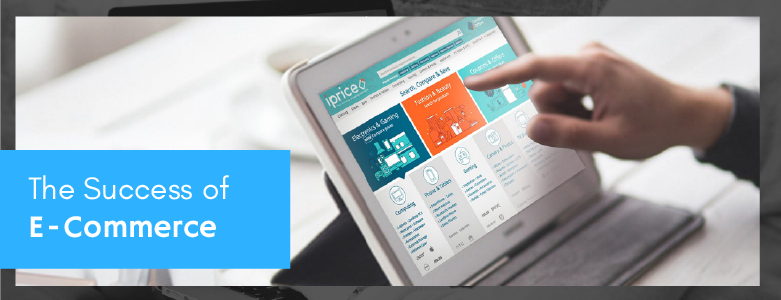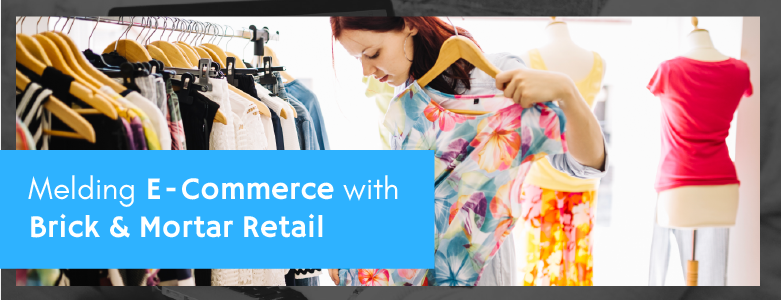You’re thinking about expanding your successful retail business to e-commerce, but you aren’t quite sold on the idea of opening and maintaining an online storefront while maintaining a brick and mortar store. Realistically, it’s a lot of work, it costs a lot of business capital, and those are both valid reasons to stall on business expansion.
That all changes when you take into account the modern evolutions of the e-commerce and retail business models. E-commerce business funding is a great choice for businesses. In 2017, Nordstrom Local and ModCloth both rocked everything we know about retail by opening brick and mortar shops called “guideshops” that don’t actually carry inventory, but instead offer a huge range of online-only inventory that they order and drop-ship after the customer shops and purchases in person.
If you’re looking to expand but have a controlled budget, this is the way to make it happen. Business loans for e-commerce is a great option. And you don’t have to take the guideshop approach specifically: there are plenty of ways to integrate an e-commerce approach into your retail store, so your customers get the selection they expect online with the convenience of browsing in-store and receiving customer assistance in person.
The Success of E-Commerce

With every passing year, e-commerce becomes more successful, at the expense of brick and mortar retail. Over half of all Americans prefer shopping online wherever possible, and retailers cater to this preference by making changes to their models.
Clothing retailers like Nordstrom offer flexible return policies so you never need to step foot in a clothing boutique again. Even grocery shopping may become a relic of the past given a few years: Amazon, Jet, and thousands of other retailers let you fill your virtual shopping cart and have your groceries delivered to your door in two days or less.
What this means for successful brick and mortar retailers is that e-commerce is the future, and there’s no getting around it. E-commerce is growing at a rate of 26 percent per year, with no signs of slowing down.
Melding E-Commerce with Brick & Mortar Retail

Expanding e-commerce means that forward-thinking retailers need to incorporate e-commerce into their business models, or they’re going to be left behind. You’re probably wondering how you’re going to juggle an e-commerce store with your retail store, but you don’t have to wonder. Instead, meld both models into one successful approach.
Guideshops
You can get the best of both models by taking the guideshop approach.
This model works by offering a retail store that’s seemingly full of inventory, but it’s only there for customers to peruse. Customers drop by, look at the product, decide what they’d like to buy… and walk out empty-handed. You order the item for them and have it drop-shipped to their door. They get the convenience of seeing the item in person (avoiding the pain of the returns process), and you get the convenience of only having to stock a floor model of each item.
Why do customers want this model? It’s simple: because it gives them the selection of shopping online with the customer service of going to their favorite boutique. Nearly 60 percent of Americans are happy to try new brands if they promise a better customer experience, and guideshops offer an experience that can’t be paralleled.
Your sales associates can provide in-depth attention to each customer’s needs and help them order exactly what they need. With online shopping, there’s a lot of trial and error. As an existing retail business looking to convert to a guideshop, you have a huge part of what you need to succeed already: the storefront, the loyal customer base, and the trained customer service associates who know what your customer wants.
Expanded Online Selection
If you’re not ready to give up your retail store’s current inventory, just expand by adding floor model items you don’t already carry, but making them available for online order only so you don’t have to find the room for them in your shop. Your selection grows, but without the burden of ordering inventory that might not sell.
For instance, if you’re running a furniture boutique, you may find that mid-century American doesn’t sell often enough to give it space in the shop, but you still have the odd customer come in looking for it a few times a month and don’t want to turn them away. If you run an online order program, you can still “stock” those low-volume products without needing to dedicate floor space, and you never have to tell the customer “no.”
In-Store Pickup for Low-Volume Product Variants
You can also add additional SKUs with different variations of products that you already carry: for instance, stock your most popular women’s sweater in the most popular red and grey color variants, and add additional color options to order. You have the models that sell the most volume on the shelf so you can appease your customers immediately.
At the same time, you load your inventory database with additional variants of the same sweater, so they’re available to order at a moment’s notice if somebody wants a color you don’t carry. If a customer comes in looking for a purple sweater instead, you can have your customer service team order that sweater for in-store pickup, and the customer can come back for it in a few days. Everyone’s happy!
Is This Type of Expansion Right for You?

This type of expansion plan is right for you if you’re interested in riding the e-commerce train to success, but not ready to make the full leap to maintaining an e-commerce and a retail storefront. It can be an in-between step on the way to a future expansion plan, or it can be your end-game model.
It’s also a great choice for businesses who are looking to streamline their inventory system, expand without adding significant cost to operations, and free up cash flow that otherwise goes toward inventory purchase orders.
Funding Your Expansion Plan

While adding e-commerce aspects to your business model is significantly cost-saving for most retailers, it still costs some capital to get started. You need to order your floor model inventory, put infrastructure in place for ordering and drop-shipping to the customer, and train your employees on helping customers to have a great shopping experience in this new store.
Chances are that a working capital loan is the best way to fund your expansion endeavor. This type of business capital offers flexible usage terms, so you can apply the funds toward anything you need, from purchase orders to tablets for your floor staff. Instead of juggling multiple bank loans for different parts of the expansion, you can rely on a single, working capital loan, to fund the entire operation.
Make sure that you choose a business capital partner who cares about helping your expansion plan succeed. Mulligan Funding is an alternative provider of funding that caters to small and medium businesses, offering guidance and solutions for a range of business types and situations. We offer:
- An easy, one-page application
- High approval rates
- Quick disbursal of funds
- Manageable repayment terms
One thing’s for sure: Now’s the time to get on board with the e-commerce trend. Customers will come to expect the convenience of a wide selection with in-store browsing as an option, and they’ll choose to shop with you because you offer this experience over the competition. With an expansion plan in place and business capital in hand from a lending partner like Mulligan Funding, you have everything you need to succeed.
Call Mulligan Funding at 855-326-3564 to discuss your financing options today!
The information shared is intended to be used for informational purposes only and you should independently research and verify.
Note: Prior to January 23, 2020, Mulligan Funding operated solely as a direct lender, originating all of its own loans and Merchant Cash Advance contracts. From that date onwards, the majority of funding offered by Mulligan Funding will be by Loans originated by FinWise Bank, a Utah-chartered Bank, pursuant to a Loan Program conducted jointly by Mulligan Funding and FinWise Bank.
